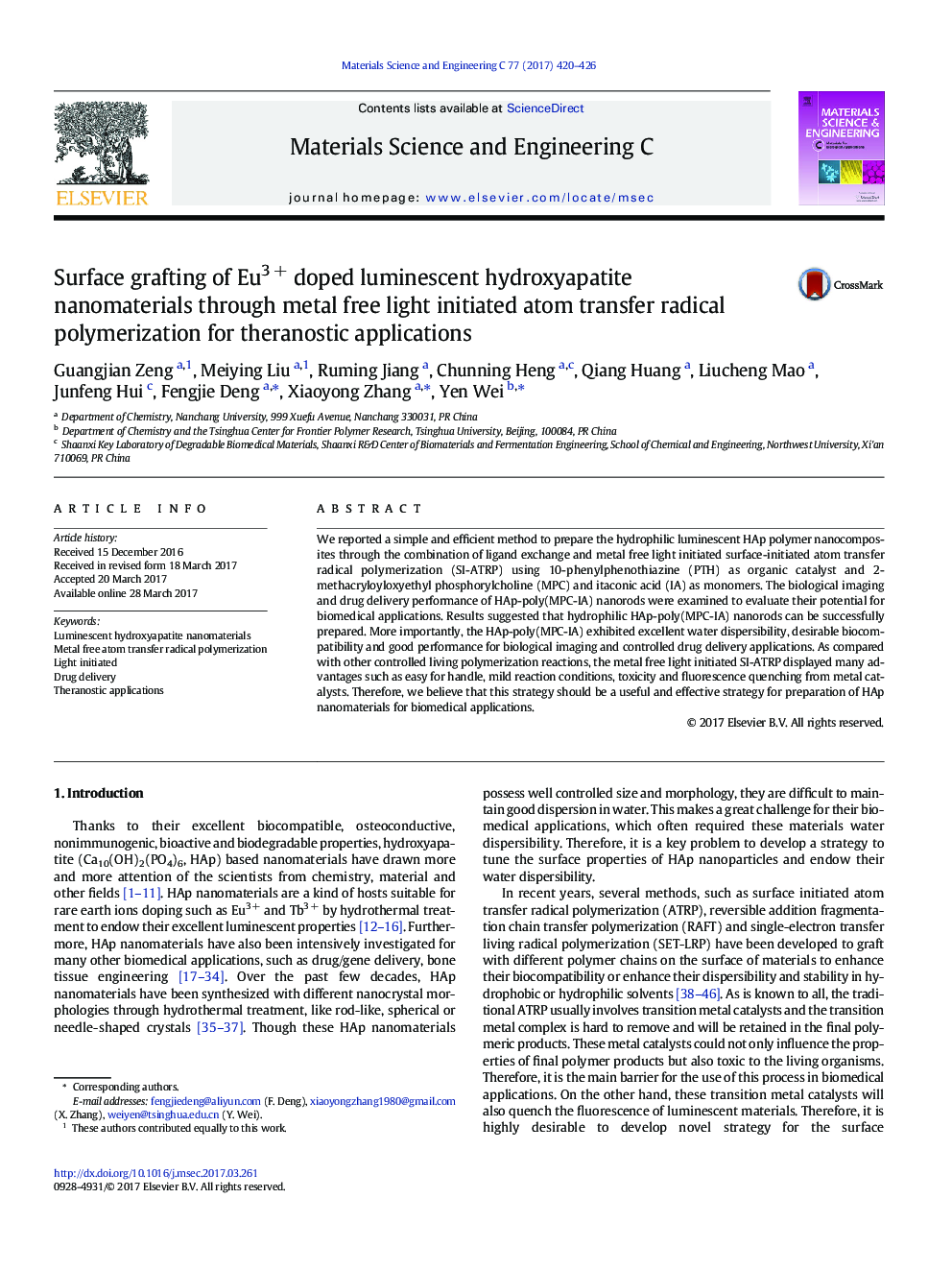| کد مقاله | کد نشریه | سال انتشار | مقاله انگلیسی | نسخه تمام متن |
|---|---|---|---|---|
| 5434540 | 1509144 | 2017 | 7 صفحه PDF | دانلود رایگان |

• Surface grafting of Eu3 + doped luminescent HAp nanomaterials through light initiated polymerization
• The photo-initiated polymerization can be achieved in the absent of metal ions
• Surface functionalization of HAp nanomaterials with zwitterionic phosphorylcholine and itaconic acid simultaneously
• These functionalized HAp nanocomposites showed great potential for theranostic applications
We reported a simple and efficient method to prepare the hydrophilic luminescent HAp polymer nanocomposites through the combination of ligand exchange and metal free light initiated surface-initiated atom transfer radical polymerization (SI-ATRP) using 10-phenylphenothiazine (PTH) as organic catalyst and 2-methacryloyloxyethyl phosphorylcholine (MPC) and itaconic acid (IA) as monomers. The biological imaging and drug delivery performance of HAp-poly(MPC-IA) nanorods were examined to evaluate their potential for biomedical applications. Results suggested that hydrophilic HAp-poly(MPC-IA) nanorods can be successfully prepared. More importantly, the HAp-poly(MPC-IA) exhibited excellent water dispersibility, desirable biocompatibility and good performance for biological imaging and controlled drug delivery applications. As compared with other controlled living polymerization reactions, the metal free light initiated SI-ATRP displayed many advantages such as easy for handle, mild reaction conditions, toxicity and fluorescence quenching from metal catalysts. Therefore, we believe that this strategy should be a useful and effective strategy for preparation of HAp nanomaterials for biomedical applications.
Zwitterionic phosphorylcholine and itaconic acid cofunctionalized luminescent hydroxyapatite nanorods were achieved through metal free light initiated atom transfer radical polymerization and utilized for biological imaging and controlled drug delivery applications.Figure optionsDownload high-quality image (252 K)Download as PowerPoint slide
Journal: Materials Science and Engineering: C - Volume 77, 1 August 2017, Pages 420–426